10 Spring Storage Solutions That Will Make Your Home Feel Bigger
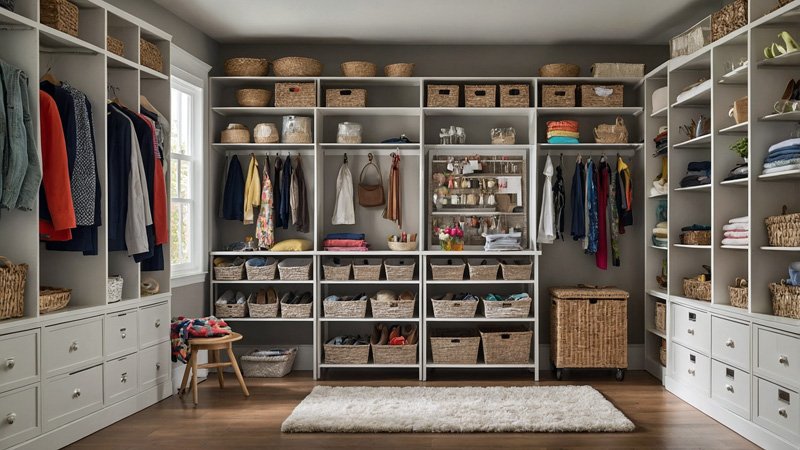
Contents
- 1. Declutter First – Less Stuff, More Space
- 2. Use Vertical Space – Think Up, Not Out
- 3. Multi-Functional Furniture – Double Duty Design
- 4. Under-Bed Storage – Hidden Potential
- 5. Over-the-Door Organisers – Every Inch Counts
- 6. Use Clear Containers – See What You’ve Got
- 7. Create Zones – A Place for Everything
- 8. Use Mirrors – Create the Illusion of Space
- Conclusion
Ever glance around your home and think, “Where did all this stuff come from?” You’re far from alone. In fact, 65% of American households admit to struggling with clutter, according to a 2024 survey by the National Association of Professional Organizers. The good news? You don’t need a home renovation to breathe space into your living areas. These 10 spring storage solutions are designed to be practical, budget-friendly, and actually easy to stick to—perfect for turning chaos into calm, no construction required. Let’s dive in.
1. Declutter First – Less Stuff, More Space
Clutter is like a heavy curtain: it blocks light, shrinks rooms, and drains energy. Before you buy a single storage bin, take time to declutter—it’s the foundation of any successful space refresh. Think of it as spring cleaning for your mind and your home.
The 4-Category System for Stress-Free Sorting
Grab four boxes and label them: Keep, Donate, Sell, and Recycle. Then, tackle one room (or even one drawer!) at a time. For every item, ask:
- Do I use this at least once a month? (If it’s seasonal, like winter boots, “use” counts for its season.)
- Does it bring me joy, serve a critical purpose, or hold meaningful memories?
- Would I buy this again today?
If the answer to all three is “no,” it’s time to let it go. Pro tip: For sentimental items (old kids’ artwork, college mugs), take a photo to keep digitally, then donate or recycle the physical object. It preserves the memory without cluttering your shelves.
Where to Send Your Unwanted Items
- Donate: Local thrift stores (Goodwill, Salvation Army) love gently used clothes, furniture, and kitchenware. For higher-end items, try Habitat for Humanity ReStore (they resell home goods to fund housing projects).
- Sell: Apps like Poshmark (clothes), Facebook Marketplace (furniture), and eBay (small items) turn clutter into cash. Price items to move—5-20 for most used goods ensures quick sales.
- Recycle: Check your city’s recycling guide for electronics, plastic, and paper. For worn-out textiles (stained shirts, holey towels), drop them off at H&M—they recycle old clothes into new fabrics.
The Mental Payoff
Decluttering isn’t just about space—it’s about peace. Studies show that a tidy home reduces stress hormones like cortisol and boosts productivity by up to 20%. By the end of this step, you’ll be shocked at how much airier your rooms feel—no storage tools needed (yet).
2. Use Vertical Space – Think Up, Not Out
When floor space feels scarce, your walls, doors, and even ceilings are untapped goldmines. Vertical storage turns “I have no room” into “Look at all this extra space!”
Room-by-Room Vertical Hacks
- Kitchen: Install floating shelves above your counter for mugs, spices, or cookbooks—they free up cabinet space and add a cozy, curated look. Use a pegboard (painted in a soft spring hue like sage green) to hang spatulas, tongs, and even small pans—no more digging through drawers.
- Living Room: Mount a wall-mounted TV stand (try a sleek wood design from IKEA) to eliminate bulky TV consoles. Add floating bookshelves in the corner for novels and decor—stack books horizontally and vertically for visual interest.
- Bathroom: A over-toilet cabinet (with open shelves on top for plants or candles) stores toilet paper, extra shampoo, and towels without eating into floor space. For small items like hairbrushes, install adhesive hooks (Command Hooks are renter-friendly!) inside cabinet doors.
Tools to Maximize Vertical Space
- Floating shelves: Opt for 12-18 inch deep shelves (thicker wood feels sturdier) and mount them 16-18 inches apart—perfect for stacking books or display items.
- Tension rods: In closets, they double as extra hanging space for scarves or belts. In kitchens, place one under the sink to hang cleaning spray bottles—no more tipping over bottles to reach the one you need.
- Ceiling hooks: In garages, hang bikes from the ceiling with heavy-duty hooks (look for ones rated for 50+ lbs)—freeing up floor space for tools or storage bins.
Renter-Friendly Options
No drills? No problem. Adhesive floating shelves (from brands like Command) and suction-cup hooks work on tile, glass, and smooth walls—just check weight limits (most hold 5-10 lbs). For a temporary pegboard, use removable mounting strips instead of screws.
3. Multi-Functional Furniture – Double Duty Design
Why buy a chair and a storage unit when one piece can do both? Multi-functional furniture is a small-space superhero, blending style with utility.
Must-Have Pieces for Every Room
- Living Room: A storage ottoman isn’t just for putting your feet up—lift the lid to stash throw blankets, remote controls, or board games. Look for ones with washable covers (great for families or pets!) in linen or cotton.
- Bedroom: A platform bed with built-in drawers (try Zinus or Wayfair’s affordable options) eliminates the need for a dresser. Use the drawers for socks, pajamas, or off-season clothes—no more under-bed clutter.
- Dining Area: A drop-leaf table folds down to 12 inches deep when not in use, perfect for studio apartments. Pair it with dining chairs that stack—tuck them in a closet when guests leave.
Style Tips for Function
Multi-functional furniture doesn’t have to look “utilitarian.” Opt for pieces with clean lines and neutral tones (beige, light gray) to blend with your decor. For example, a storage bench with a woven rattan top adds texture to an entryway while hiding shoes.
Budget-Friendly Finds
You don’t need to splurge. IKEA’s STOCKSUND sofa bed turns a living room into a guest room in seconds, while Target’s Threshold collection sells end tables with hidden compartments for under $100.
4. Under-Bed Storage – Hidden Potential
Your bed takes up 20-30% of your bedroom floor space—why let the area underneath go to waste? It’s the ideal spot for items you don’t use daily but still need.
The Best Containers for Under-Bed Storage
- Flat plastic bins with lids: Look for ones with wheels (from Sterilite or Rubbermaid) so you can slide them out easily. They’re perfect for winter coats, hats, and scarves—seal them tight to keep dust and bugs out.
- Vacuum-seal bags: Suck the air out of bulky items like comforters, pillows, or sweaters—they shrink to 1/3 their size. Pro tip: Label the bags with a marker so you know what’s inside (“Queen-size winter blanket”).
- Bed risers: If your bed is low, these 4-6 inch plastic or wood risers add inches of space underneath. They’re affordable (10-20 for a set) and work with most bed frames.
What to Store (and What to Avoid)
- Store: Seasonal clothing, extra bedding, luggage, and holiday decor (wrapping paper, ornaments).
- Avoid: Food (attracts pests), electronics (moisture can damage them), or fragile items (they might get crushed when you move bins).
Renter Hack: No Risers? No Problem
If you can’t drill or add risers, use slim fabric storage bags (from The Container Store) that slide under even low beds. They’re soft, so they won’t scratch floors, and many have clear windows to see inside.
5. Over-the-Door Organisers – Every Inch Counts
Doors are the most underrated storage real estate in your home. An over-the-door organiser turns empty space into a storage powerhouse—no installation required.
Room-Specific Organisers
- Bathroom: A mesh over-the-door caddy (with 6-8 pockets) holds shampoo, conditioner, and body wash—freeing up shower shelves. For the back of the cabinet door, use adhesive hooks to hang hair dryers or curling irons.
- Closet: A fabric shoe organiser (with clear pockets) holds 12+ pairs—say goodbye to shoes scattered on the floor. Bonus: Use it for scarves, belts, or even kids’ socks (one pocket per pair!).
- Kitchen: A metal over-the-pantry-door rack with hooks is perfect for aprons, pot holders, and even small cleaning tools like dusters.
Choosing the Right Material
- Mesh: Breathable and mold-resistant—ideal for bathrooms or laundry rooms.
- Fabric: Soft and stylish, great for bedrooms or closets. Look for machine-washable options.
- Plastic: Durable and easy to wipe clean—perfect for kitchens or garages.
Pro Tip: Secure It Tight
To prevent organisers from sagging, use command strips to attach the top edge to the door. It keeps them stable, even when fully loaded.
6. Use Clear Containers – See What You’ve Got
Ever bought a second bottle of ketchup because you couldn’t find the first one? Clear containers solve that problem. They let you see what’s inside at a glance, so you avoid duplicates and wasted space.
The Best Containers for Every Space
- Pantry: Glass jars (Mason jars work!) store pasta, rice, cereal, and snacks. They’re airtight, so food stays fresh longer, and they look neat on shelves. Label them with chalkboard stickers (“Oats,” “Quinoa”) for extra clarity.
- Closet: Clear plastic bins (with lids) keep sweaters, jeans, and accessories dust-free. Stack them on high closet shelves—you’ll never forget what’s in the bottom bin.
- Garage: Heavy-duty clear totes (from Husky or Rubbermaid) protect tools, sports equipment, or paint cans from moisture. Look for ones with latched lids to keep critters out.
Why Clear Beats Opaque
Opaque containers turn storage into a guessing game. With clear ones, you’ll save time (no more opening 10 bins to find one item) and money (no more re-buying things you already own). Plus, they make your shelves look intentional, not cluttered.
Budget-Friendly Alternatives
You don’t need to buy brand-new containers. Reuse glass jars from pasta sauce or pickles (wash them thoroughly!) for pantry staples. Old clear plastic yogurt containers (after thorough cleaning) are great for storing small items like buttons, paper clips or hairpins.
7. Create Zones – A Place for Everything
Ever spend 10 minutes searching for your keys? Zoning solves that. By assigning specific “homes” to items and activities, you’ll turn chaos into order—permanently.
How to Zone Every Room
- Entryway: Create a “drop zone” with a small table, a wall hook for keys, and a basket for mail. Add a tray for sunglasses and a shoe rack by the door—no more tripping over sneakers.
- Kitchen: Zone by activity: a “baking corner” (mixing bowls, measuring cups, flour jars), a “cooking zone” (spices, oils, utensils near the stove), and a “snack station” (granola bars, nuts, reusable bags for on-the-go).
- Home Office: Separate work from relaxation with a dedicated desk area (pens, paper, laptop) and a “charging station” (a tray with phone chargers, headphones, and a power strip).
Tools to Define Zones
- Area rugs: A 5×7 rug in the living room’s seating area visually separates it from the dining space.
- Storage baskets: Use woven baskets (try Target’s Threshold line) to corral kids’ toys in the play zone—tuck them under a coffee table when not in use.
- Drawer dividers: In the kitchen, they turn a jumbled utensil drawer into neat sections for forks, knives, and spatulas.
The Family Factor
If you live with roommates or kids, label zones clearly (“Kids’ Shoes,” “Dad’s Keys”) to avoid mix-ups. A quick family meeting to explain the system ensures everyone sticks to it—no more “I didn’t know where it goes!”
8. Use Mirrors – Create the Illusion of Space
Mirrors are magic: They reflect light, double visual depth, and make even the tiniest rooms feel spacious. It’s a design trick used by interior designers worldwide—and it costs next to nothing.
Mirror Placement 101
- Opposite windows: A large mirror (36×48 inches or bigger) across from a window bounces natural light across the room, making it feel brighter and larger. Try a round mirror with a thin gold frame for a modern, airy look.
- In narrow hallways: A full-length mirror on one wall creates the illusion of width. Lean it against the wall (no drilling!) for a casual, chic vibe.
- In small bathrooms: A mirror above the sink that extends to the ceiling draws the eye upward, making the room feel taller. Add a second small mirror on the opposite wall for extra depth.
Styles to Match Your Decor
- Scandinavian: Lean a large, unframed mirror against a wall for a minimalist look.
- Bohemian: Layer small, mismatched mirrors (some with macramé hangers) on a living room wall.
- Modern: A rectangular mirror with a sleek black metal frame adds edge to a kitchen or bedroom.
Budget Finds
You don’t need a designer mirror. Check thrift stores (old frames can be painted!) or Amazon—affordable options start at $20 for a 24-inch round mirror.
9. Go Digital – Reduce Paper Clutter
Paper is the silent clutter culprit: bills, receipts, flyers, and old mail pile up faster than you can say “recycle.” Going digital slashes paper stacks and makes information easier to find.
Apps to Digitise Your Life
- Scanning: Use Google Lens (free!) to scan receipts, bills, or kids’ artwork—save them to Google Drive or Dropbox. For important documents (passports, insurance), try Evernote—it organises scans into folders and lets you search for keywords.
- Bills & Banking: Most banks and utilities offer paperless billing—set up email reminders so you never miss a payment. Apps like Mint sync all your accounts in one place, so you can ditch paper statements.
- To-Do Lists & Calendars: Replace sticky notes with apps like Todoist or Google Calendar. Share family calendars digitally so everyone knows who’s picking up the kids or when groceries are needed.
What to Keep (Physically)
Some papers are worth holding onto:
- Original birth certificates, passports, and deeds (store them in a fireproof safe).
- Tax documents (keep physical copies for 7 years, then scan and shred).
Shredding Tips
Invest in a small shredder (30-50 from Amazon) for sensitive papers (bank statements, credit card offers). Many libraries or office supply stores (Staples, Office Depot) offer free shredding days in spring—check their websites for dates.
10. Regular Maintenance – Keep It Tidy
Storage solutions work only if you stick to them. A little daily effort prevents clutter from creeping back—and keeps your home feeling spacious all year.
Daily Habits (10 Minutes or Less)
- Make your bed: It instantly makes the bedroom feel put-together.
- Do a “5-minute sweep”: Pick up 3-5 items (toys, dishes, clothes) and put them in their designated zones.
- File mail: Toss junk mail immediately, and put bills in a “to-pay” folder by your desk.
Weekly Tasks
- Wipe down surfaces and reorganise any bins that got messy.
- Return items to their zones: “If it’s not in its home, it’s clutter.”
- Take out recycling and donate a bag of unused items (keep a “donate” bin in your closet to make this easy).
Monthly Check-In
Set a date (the first Sunday of every month works!) to:
- Review zones: Are they still functional? Adjust as needed (e.g., move the snack basket closer to the door if you grab snacks on your way out).
- Purge again: Even after decluttering, small items (old receipts, broken pens) accumulate—spend 30 minutes clearing them out.
Conclusion
These 10 solutions aren’t just about storage—they’re about creating a home that works for you, not against you. By decluttering, using vertical space, and leaning into smart tools, you’ll turn cramped rooms into open, inviting spaces that feel like a breath of spring air.
Ready to start? Pick one solution this week (we recommend starting with decluttering!) and build from there. Your future self—relaxing in a clutter-free home—will thank you.
P.S. Need help finding the perfect storage tools? Check out our partner links for organisers, bins, and mirrors that we use and love—your purchase supports keeping these tips free!


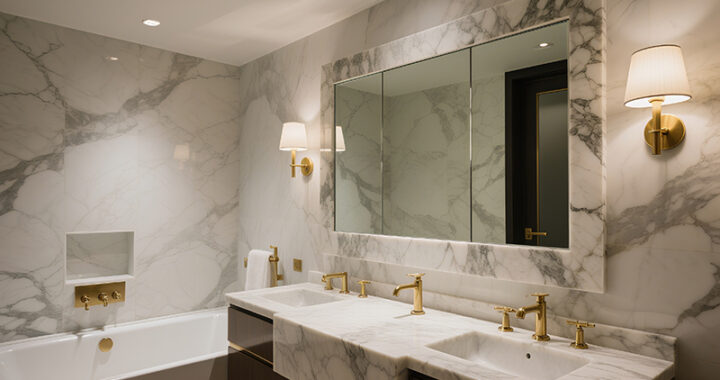 Best Luxury Bathroom Mirrors for a Stylish Touch
Best Luxury Bathroom Mirrors for a Stylish Touch 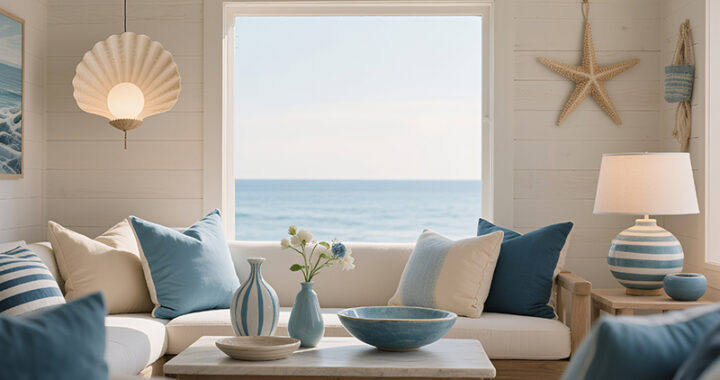 Luxury Coastal Home Decor Ideas: Elevate Your Beach House with Timeless Elegance
Luxury Coastal Home Decor Ideas: Elevate Your Beach House with Timeless Elegance  Home Decor Ideas to Make Your Home Feel Like a Luxury Hotel
Home Decor Ideas to Make Your Home Feel Like a Luxury Hotel 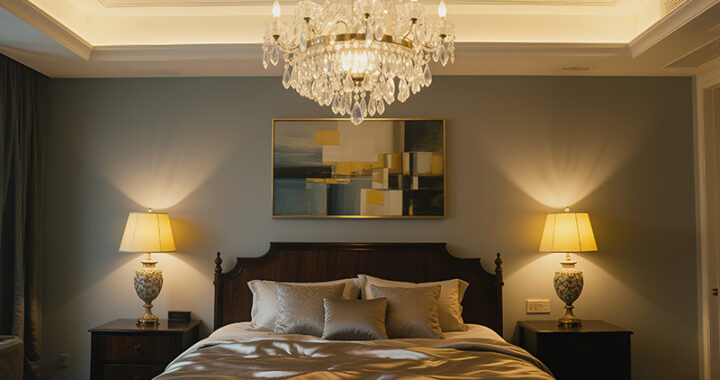 Best Luxury Accent Lighting for Every Room
Best Luxury Accent Lighting for Every Room 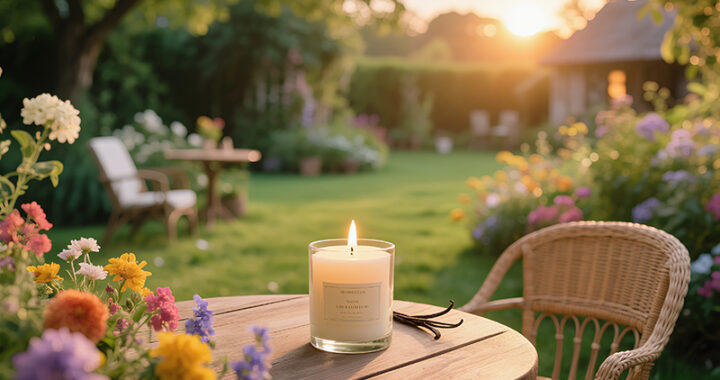 Best Luxury Candles for a Cozy and Elegant Home
Best Luxury Candles for a Cozy and Elegant Home 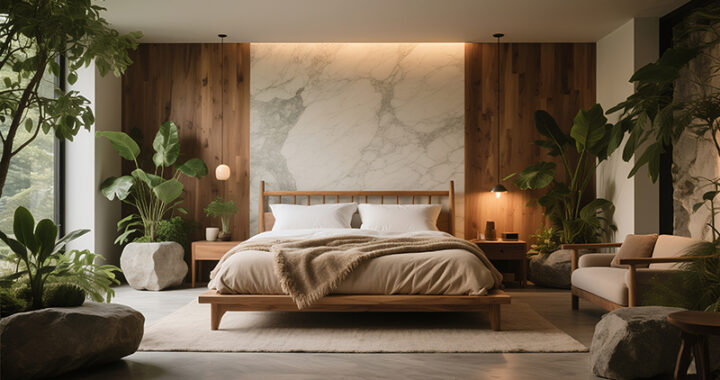 Best Luxury Bed Frames for a Stylish Bedroom
Best Luxury Bed Frames for a Stylish Bedroom